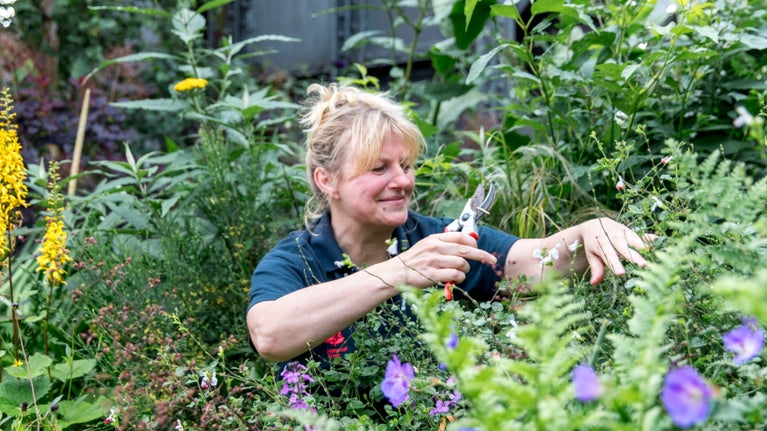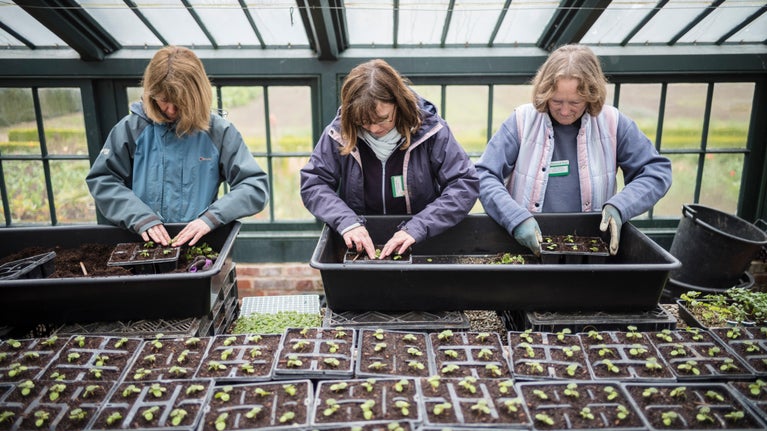
Get gardening
Our gardeners are on hand with ideas for your garden, plot or window box. From planting veg to tackling weeds, they’ve got all the important topics covered.

Spring is an uplifting time of year for many of us as we watch the natural world burst into life. Learn some handy gardening tips on creating blossom displays, pruning and mowing, and the types of flowers and vegetables to plant this season.
Once the soil is warm enough, you can start planting potatoes and onions and sowing hardy vegetables, including broad beans, cabbages, carrots, radishes, lettuce, rocket and spinach.
March and April are good months to plant perennials, sow hardy annuals such as marigolds, and plant summer-flowering bulbs, including lilies and gladioli. Prepare your beds in late May by removing weeds and digging and raking the soil to a fine tilth.
Want to create more plants for free? As daffodils and other spring bulbs die back, start dividing crowded clumps to spread them out for next year.
Rising temperatures accelerate growth in borders and vegetable beds, so it's important to keep on top of weeds with regular hoeing.
You can also mulch your borders in early spring, provided the soil is moist, to help prevent weeds.
Prune hydrangeas in March. Look for a set of healthy strong buds and cut the old flower heads back to just above them.
For mature or congested plants, take out some of the older growth to encourage them to reshoot from the base.
Take care not to disturb nesting birds and always check carefully before pruning hedges or shrubs.
When you tidy and cut back winter growth in spring, remember it may be home to insects and amphibians, or even a hibernating hedgehog.
Join the growing trend of leaving all or parts of your lawn uncut for a few weeks at a time. This will allow clover, daisies and other lawn species to flower, providing nectar and pollen for bees and other pollinating insects.

If you have a small garden, patio or terrace, then container growing could be for you. Here are some useful tips to help you make the most of container growing.
Bulbs and annuals are great for growing in containers because you can replant each year to create new schemes. Herbs such as parsley, basil and thyme will also grow well in pots – place them near your kitchen door for easy access.
Many perennials and even small shrubs and trees will grow in containers, but species choice is important so make sure you do your research before you buy.
Use good-quality peat-free potting compost for temporary displays. For shrubs and perennials, which will stay in the same compost for a while, choose one with soil in it or add your own.
Plants in containers need regular watering, so ask a helpful neighbour to take care of them when you’re away.
Even if you have a small garden, you can create an eye-catching blossom display. The key to success is choosing the right size trees or shrubs for the space you’ve got.
You can buy bare-root trees and shrubs between November and March or in containers all year round. It’s best to plant them in autumn or early spring.

Personal taste, colour and smell are obvious criteria for selecting a blossom tree, but remember to check the plant’s soil preferences and potential height once it's fully matured. A container shrub will fit into the smallest of spaces, but remember this will need regular feeding and watering.
If you’ve got space for more than one tree, think about how they will complement each other – flowering in sequence or contrasting colours. You may want a tree with multi-season interest or one that produces fruit. Fruit tree blossom is great for pollinating insects.

Our gardeners are on hand with ideas for your garden, plot or window box. From planting veg to tackling weeds, they’ve got all the important topics covered.
Discover top tips on getting the most from your allotment or patch, and find out why growing your own fruit and vegetables is good for you in more ways than one.

We've committed to going peat free as an organisation, and all the plants we grow, buy and sell are potted in peat-free compost. Hear from our team of gardening experts and discover top tips for peat-free gardening in your green space.

The daffodil is a classic spring flower. Take expert tips from National Trust gardeners to achieve a cheery daffodil display in your own garden.

The bluebell is one of the nation's favourite wild flowers and our gardeners take great care of these plants at many of the places we look after. Discover some of their top tips for growing bluebells in your garden.
